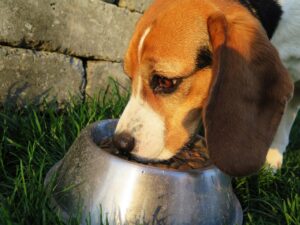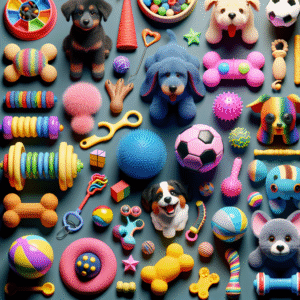
Feeding your dog the right amount of food is essential for maintaining their health and wellbeing. With the plethora of dog food options available today, it can be overwhelming to determine how much is just right for your furry companion. This article will guide you through the key factors to consider when figuring out the optimal daily feeding for your dog, ensuring they stay healthy, active, and happy.
Understanding Your Dog’s Nutritional Needs
Every dog is unique, and their nutritional needs can vary significantly based on several factors. It is critical to understand these needs to provide a balanced diet that supports their overall health.
Age and Life Stage
The nutritional requirements of a dog change throughout their life. Puppies need more calories and nutrients to support their rapid growth and development, while adult dogs require a balanced diet to maintain their health and energy levels. Senior dogs may need fewer calories to prevent weight gain but may require additional nutrients to support joint health and other age-related conditions.
Breed and Size
Different breeds have different metabolic rates and sizes, impacting their dietary needs. Large breeds, like Great Danes and Saint Bernards, typically require more food than smaller breeds such as Chihuahuas or Dachshunds. Breed-specific nutritional guidelines can provide a useful starting point when determining feed amounts.
Activity Level
An active dog that engages in regular exercise will require more calories than a sedentary dog. Working dogs, such as those involved in herding or hunting, will have higher caloric needs than dogs with a more laid-back lifestyle. It’s essential to adjust the feeding amount based on your dog’s daily activity levels to prevent overfeeding or underfeeding.
Health Status
Dogs with specific health conditions may have unique dietary requirements. For example, dogs with diabetes may need a diet low in simple carbohydrates, while those with kidney disease might benefit from reduced protein intake. Always consult with a veterinarian when addressing dietary needs for health conditions.
Calculating Your Dog’s Caloric Needs
Understanding your dog’s caloric needs is a crucial step in determining the right amount of food to feed them daily. The Resting Energy Requirement (RER) can be calculated using your dog’s weight, and it provides a baseline for the number of calories they need at rest.
Calculating RER
The formula to calculate RER in kilocalories per day is: RER = 70 * (body weight in kg)^0.75. This calculation provides a starting point that needs to be adjusted based on your dog’s activity level, age, and other factors.
Adjusting for Lifestyle Factors
Once you have the RER, you need to adjust it based on your dog’s activity level. Multipliers are used to determine the total daily caloric needs:
- Sedentary dogs: RER * 1.2
- Moderately active dogs: RER * 1.4 to 1.6
- Highly active dogs: RER * 1.8 to 2.0
These adjustments ensure your dog receives adequate energy to match their lifestyle.
Choosing the Right Dog Food
Once you know your dog’s caloric needs, the next step is selecting the right type of food. There are various types of dog food, each with its benefits and considerations.
Commercial Dog Food
Commercial dog foods come in dry, wet, or semi-moist forms. They are convenient and formulated to meet the nutritional standards set by organizations like the Association of American Feed Control Officials (AAFCO). When selecting commercial food, ensure it meets the nutritional adequacy statement for your dog’s life stage.
Homemade Diets
Some dog owners prefer preparing homemade diets for their pets. While this option allows for greater control over ingredients, it’s vital to ensure the diet is nutritionally balanced. Consulting with a veterinary nutritionist can help create a diet plan that meets all of your dog’s nutritional needs.
Raw Diets
Raw diets, also known as BARF (Biologically Appropriate Raw Food) diets, consist of raw meat, bones, fruits, and vegetables. Advocates claim these diets mimic the natural diet of dogs’ wild ancestors. However, feeding raw requires careful planning to avoid nutritional imbalances and potential health risks like bacterial contamination.
Monitoring Your Dog’s Weight and Health
Regular monitoring of your dog’s weight and overall health is crucial to ensure they are receiving the correct amount of food. An ideal body condition score (BCS) can help you assess your dog’s weight status.
Body Condition Score
The BCS is a visual and tactile assessment of a dog’s body fat and overall condition. It ranges from 1 to 9, with 1 being emaciated and 9 being obese. A BCS of 4 to 5 is considered ideal for most dogs. Regularly assess your dog’s BCS to determine if adjustments in their diet are necessary.
Signs of Overfeeding or Underfeeding
Signs of overfeeding include weight gain, lethargy, and digestive issues. On the other hand, underfeeding may result in weight loss, poor coat condition, and decreased energy. Adjust the feeding amount accordingly and seek veterinary advice if needed.
Consulting with a Veterinarian
Your veterinarian is an invaluable resource when determining the optimal feeding amount for your dog. They can provide personalized dietary recommendations based on your dog’s unique needs and health status.
Regular Health Check-Ups
Regular veterinary check-ups are crucial for monitoring your dog’s health and nutritional status. These visits allow for early detection of any health issues and adjustments to their diet as needed.
Specialized Nutritional Advice
If your dog has specific dietary needs or health concerns, a veterinary nutritionist can offer specialized advice. They can help formulate balanced diets that cater to your dog’s requirements, ensuring optimal health and wellbeing.
Conclusion
Feeding your dog the right amount of food is essential for their health and happiness. By understanding their nutritional needs, calculating their caloric requirements, and selecting the appropriate food, you can ensure your dog receives the optimal daily feeding. Regular monitoring and consultation with a veterinarian will help you make any necessary adjustments, keeping your furry friend healthy and thriving.
#ChatGPT assisted in the creation of this article.







